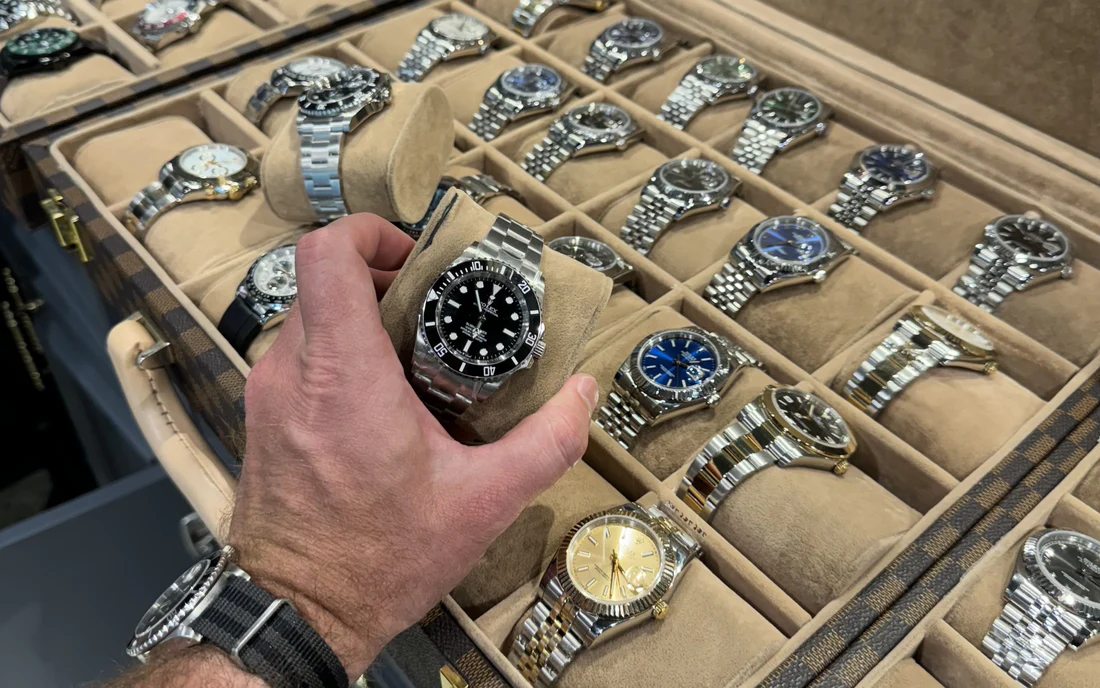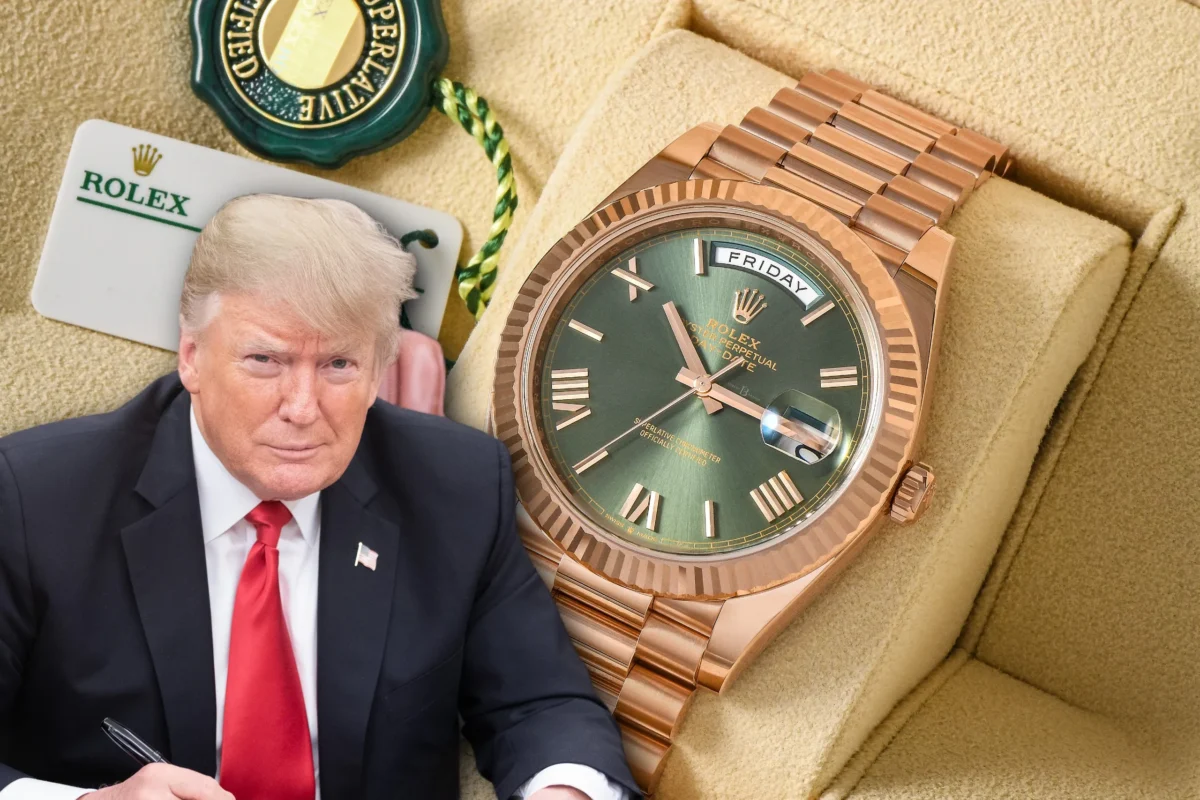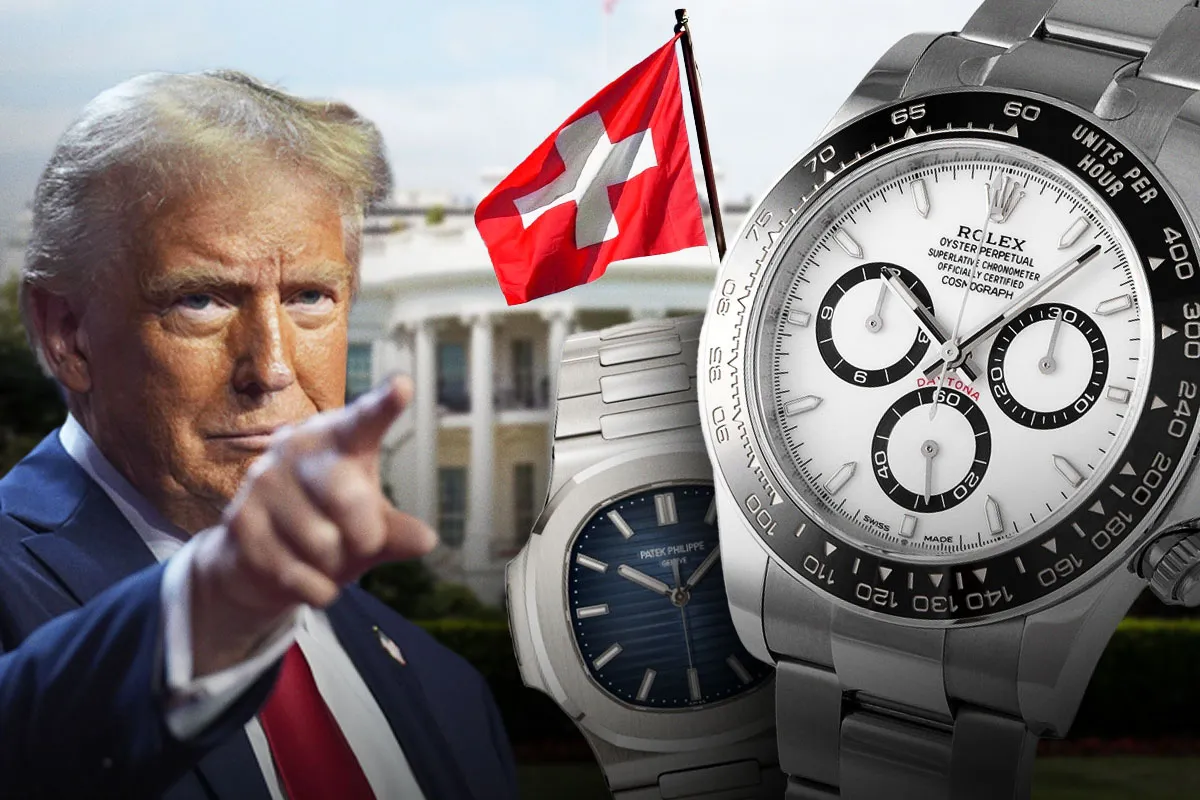Articles
The Impact of Trump’s Tariffs on Rolex: Prices, Demand, and More
Hey there, fellow watch enthusiasts. Picture this: you’ve been eyeing that Rolex Submariner for months, maybe even years, saving because, let’s face it, these aren’t impulse buys. But just when you’re ready to pull the trigger, news hits about hefty new tariffs inflating prices even more. It’s frustrating, right? Well, that’s the reality you’re dealing with now, thanks to President Trump’s 39% tariffs on Swiss imports, which kicked in around early August 2025. While this might sound like bad news for the Rolex Market, it is good news for the Replica Rolex Market. Hypothetically speaking, this will supercharge demand for our superclone replicas, pushing us(the replica watches market) to up our game in quality, materials, and even mass acceptance, because luxury watches will become even more unjustifiably expensive and unreachable for a lot of people.

Let’s break it down. The global luxury watch market is booming, projected to increase from about $53.69 billion in 2024 to $59.97 billion in 2025 and up to a whopping $134.53 billion by 2032. Swiss brands like Rolex are kings here, with prices for models like the Submariner starting around $9,100 retail, but due to their exclusivity and waitlist structure, much more on the secondary market. But on the flip side, the counterfeit watch scene is no small potatoes—estimates suggest 23 million fake watches are circulating just in the US alone, outpacing genuine production by a landslide. And with tariffs widening the gap between affordable and excessive, replicas might just become the go-to for many. In this article, we’ll dive into the tariff backstory, how it’s slamming genuine Rolex prices, the potential replica demand surge, quality upgrades that will follow, and why society’s warming up to superclones in a world where Swiss brands charge an arm and a leg.
Background on Trump’s Tariffs on Swiss Goods
Okay, let’s get the facts straight first, because trade policies have been very misunderstood lately. Back in late July 2025, the White House rolled out these “reciprocal tariffs,” aiming to fix what Trump sees as unfair trade imbalances. Switzerland got slapped with one of the highest rates—39% on its exports to the US—because of its massive trade surplus with the US, clocking in around $40 billion, though some say that’s exaggerated if you factor in services. Why Switzerland? It’s not just watches; think gold refining, pharma, and more. But for watch collectors and enthusiasts, the luxury goods hit is brutal. These tariffs went live in early August, and they’re already rippling through industries, potentially threatening Swiss jobs, especially in watchmaking, since the US is their biggest “customer”.
You could say it’s almost ironic, a country famous for staying neutral in wars, now caught in a trade war crossfire. The US is Switzerland’s biggest market for watches, so this isn’t some minor tax change. Swiss exports to America were already unstable, and this could worsen it. Trump increased the rate from an initial threat, and despite Swiss officials negotiating with Washington, they left empty-handed. Some companies are trying workarounds, like routing through other countries, but the Swiss government is warning against it—it’s basically tariff dodging and could backfire. Bottom line? This is Trump’s broader push to “rectify” global trade, but for Swiss luxury, it’s a headache that’s just starting.
How the Tariffs Will Impact the Genuine Rolex Market
If you’re in the market for a real Rolex, brace yourself, this isn’t good news. That 39% tariff directly increases import costs, and brands aren’t absorbing it all. Experts are predicting price jumps, turning “luxury” into “unattainable” for many. Take the iconic Submariner: It retails for about $9,100, but on the secondary market, you’re already looking at higher figures. Post-tariff? Analysts figure a $10,000 watch could leap to $13,000 or more, especially with recent price hikes already in play. Ofcourse, the same Submariner that was $14-15,000 will spike to $17-19,000.
Watch shop owners on are sharing on X that they are stocking up pre-tariff to avoid the worst, but that’s short-term. Supply chains are disrupted as Swiss makers are rushing shipments, but once the dust settles, US sales could stall. The industry saw exports dip last year, and this could worsen it, especially with younger buyers now facing even steeper barriers. Rolex might shift some production or eat partial costs, but let’s be real: Their average prices have been climbing steadily. Tariffs just accelerate that. Here’s a quick comparison table for popular models (pre- and estimated post-tariff retail, based on expert guesses):
| Model | Pre-Tariff Retail (2025) | Estimated Post-Tariff Retail |
|---|---|---|
| Submariner (No-Date) | $9,100 | $11,800 – $12,700 |
| GMT-Master II | $11,650 | $15,100 – $16,200 |
| Daytona | $15,100 | $19,600 – $21,000 |
It’s not just prices; demand might spike short-term as people rush to buy, but long-term? Weaker US imports could hurt Swiss exports further. If you’re like me, this feels like another nail in the coffin for accessible luxury.

The Boom in Demand for Replica Rolex Watches
Now, here’s where it gets interesting for us. As genuine Rolex prices soar into the stratosphere, the financial decision to buy a replica Rolex just got stronger. Hypothetically, these tariffs could widen the price chasm so much that demand for superlcones explodes(It has already been rising very fast in recent years). Replicas often cost 1/10th or less, think under $500 for a decent Replica vs. thousands for the real watch.
Tariffs will make a Day-Date feel like a mortgage payment, so more and more people will turn to replica watches. It’s not just budget buyers; even mid-tier and higher-tier collectors will dip in as a protest against Swiss greed and the unjustifiability high prices. The fake Swiss watch market is massive, causing billions in losses annually, but that’s the flip side; it’s a shadow economy thriving on accessibility. Pros? More options for the average Joe. Our clients swear by replicas for daily wear, saving the real ones for special occasions. If demand booms, the market will become more competitive, forcing all the factories to increase quality control, R&D, materials used, and customer service. We as the top vendor of Replica Rolex watches, are not afraid; on the contrary, we are happy about it, because it will create a stronger and more stable market with fewer “low quality” vendors that screw the reputation of good vendors like us.
How Increased Demand Could Elevate Replica Quality and Innovation
Building on that hypothesis, imagine the replica factories swimming in extra cash from surging sales. What do the market do? Pour it into R&D, better materials, and tighter quality control. Right now, our top-tier “super clones” use ceramic bezels and movements that replica Swiss ETA calibers, lasting 5-10 years with care. A revenue boost could mean even closer approximations, think improved lume, anti-reflective coatings, fewer defects, thicker gold coating, and other great things.
The overall watch market is growing, and replicas will ride that wave.
The Growing Acceptance of Replica Watches in a High-Price World
Let’s talk about the elephant in the room: Swiss brands’ prices are nuts, with markups over 500%(for regular models) and up to thousands of percentages for limited editions, and averages are climbing. No wonder replicas are gaining traction; it’s like a quiet rebellion against gatekeeping. Public opinion? Mixed bag. Forums buzz with debates: Some call fakes “insecure,” but others see them as smart access to style without bankruptcy. Surveys hint at openness to alternatives as costs rise. Younger crowds, frustrated with hype, are normalizing it via influencers.
Purists might scoff, but in a world where a watch costs more than a used car, who’s the fool? Tariffs accelerate this shift, making replicas not just affordable, but culturally accepted, and sometimes even looked at as a smart financial decision.
Conclusion
Wrapping up, Trump’s 39% tariffs are shaking the Rolex world, hiking genuine prices while fueling replica demand, quality leaps, and broader acceptance. The luxury market’s headed to $134.53 billion by 2032, but fakes might claim a bigger slice. In this chaos, replicas aren’t villains; they’re the future for many. What do you think? Drop a comment below, or check our replica picks. Will superclones go mainstream? Only time will tell.


